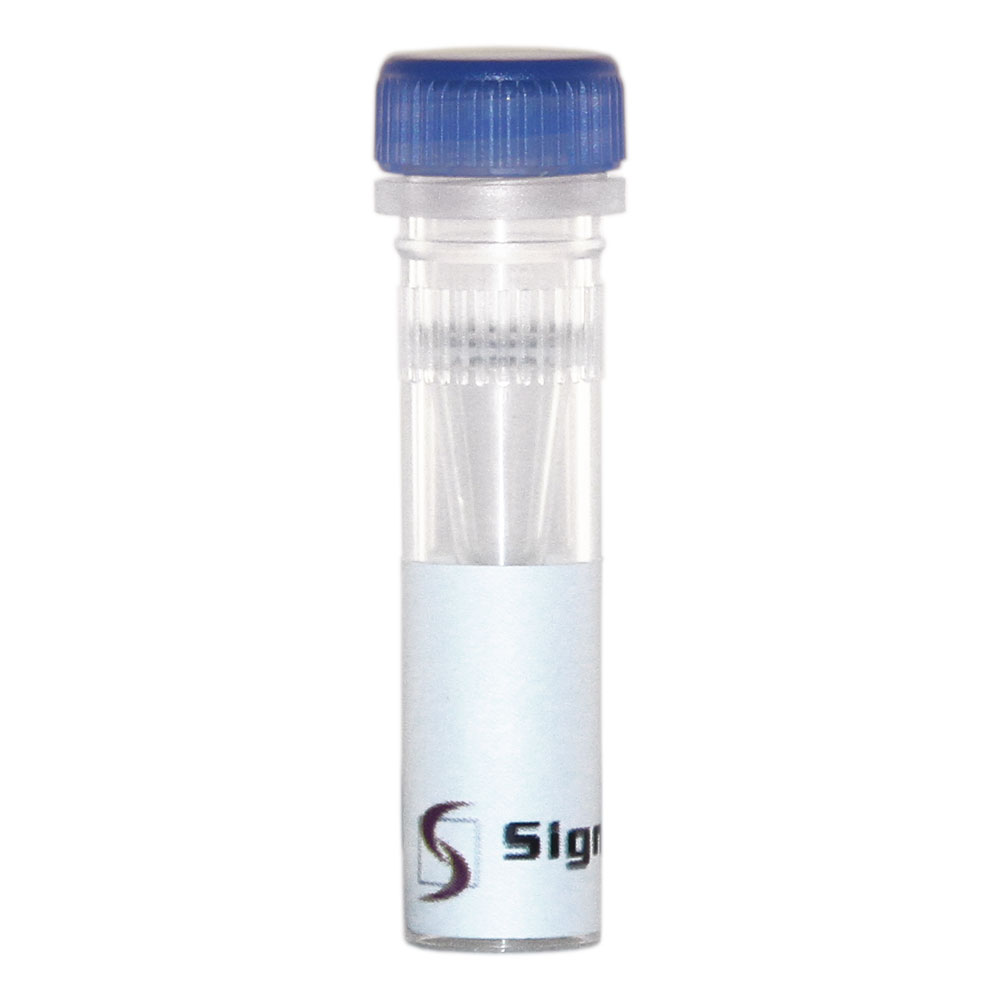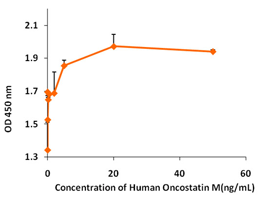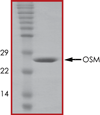
OSM
Recombinant Human OSM was expressed in E. coli cells.
Catalog No. O841-40N
| Catalog No. | Pack Size | Price (USD) | |
|---|---|---|---|
| O841-40N-10 | 10 ug | $193 | |
| O841-40N-200 | 200 ug | $2085 | |
| O841-40N-1000 | 1 mg | $5473 | |
| O841-40N-BULK | BULK | Contact Us |

Recombinant Human OSM was expressed in E. coli cells.
Catalog No. O841-40N
| Catalog No. | Pack Size | Price (USD) | |
|---|---|---|---|
| O841-40N-10 | 10 ug | $193 | |
| O841-40N-200 | 200 ug | $2085 | |
| O841-40N-1000 | 1 mg | $5473 | |
| O841-40N-BULK | BULK | Contact Us |
Overview:
Oncostatin M is produced by monocytes and T cells after cell activation, adherent macrophages, and various T cell lines. Oncostatin M is a member of the IL-6-related cytokine subfamily that includes IL-6, IL-11, LIF, CNTF and CT-1. Oncostatin M mediates its bioactivities through two different heterodimer receptors. They both involve gp130 as a signal transducing moiety, which is found also in receptors for a number of other cytokines. When gp130 dimerizes with LIF receptor beta subunit this generates the high affinity type 1 OSM receptor. When gp130 dimerizes with a protein known as OSM receptor beta this generates the type 2 OSM receptor. Both OSM receptors activate the receptor-associated Janus kinases JAK1, JAK2, and TYK2. Signaling also involves the transcriptional activators STAT3 and STAT5b (see also: STAT proteins) were specifically activated through the gp130-OSM-R-beta type II heterocomplex. The signaling pathway differences observed between the common type I LIF/OSM receptor and the specific type II OSM receptor might explain some of the bioactivities specifically displayed by OSM. Oncostatin M inhibits the growth of several tumor cell lines (A375 melanoma, lung carcinomas). The antiproliferative activity of oncostatin M for some cell lines is synergised by TGF-beta and IFN-gamma. It promotes the growth of human fibroblasts, vascular smooth muscle cells, and some normal cell lines. Oncostatin can inhibit the proliferation of murine M1 myeloid leukemic cells and induces their differentiation into macrophage-like cells, a function shared by LIF, G- CSF, and IL-6.
Gene Aliases:
OSM, Oncostatin M
Genbank Number:
Storage, Stability and Shipping:
The lyophilized protein is stable for at least one year from date of receipt at -70oC. Upon reconstitution, this cytokine can be stored in working aliquots at 2o - 8oC for one month, or at -20oC for six months, with a carrier protein without detectable loss of activity. Avoid repeated freeze/thaw cycles.
Endotoxin Level:
<1.0 EU/μg of recombinant protein as determined by the LAL method.
Molecular Weight:
26.0 kDa
Reconstitution Protocol:
A quick spin of the vial followed by reconstitution in distilled water to a concentration not less than 0.1 mg/mL. This solution can then be diluted into other buffers.
Sample Cell Assay Data:
The ED(50) was determined by the dose-dependent stimulation of the proliferation of f human TF-1 cells is ≤ 3.0 ng/mL, corresponding to a specific activity of ≥ 2.0 x 10^5 units/mg.

|
Purity:
Recombinant Human OSM resolved on a 15% SDS-PAGE gel under reducing conditions and stained with Coomassie Brilliant Blue G-250

|
There are no related publications available for this product.
Cancer
STAY CONNECTED
Fax: 1-604-232-4601